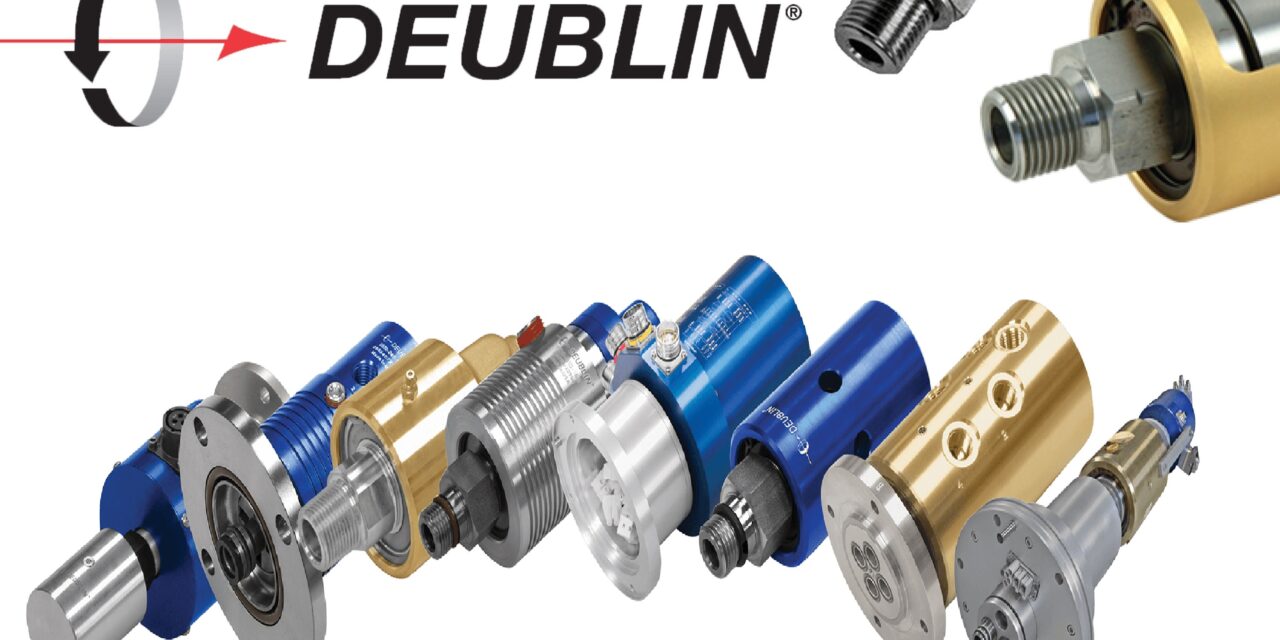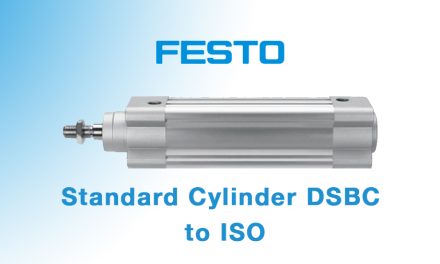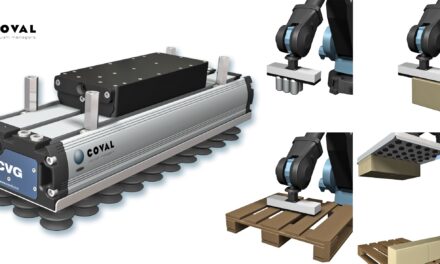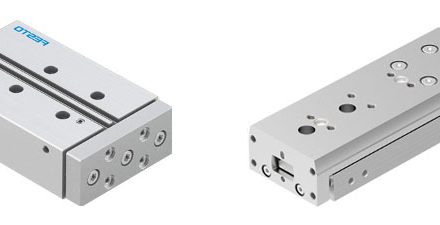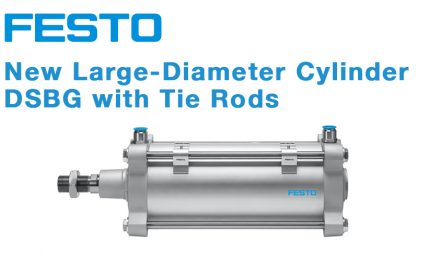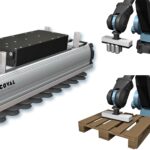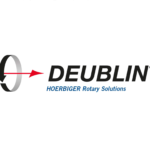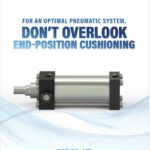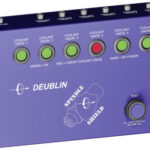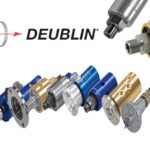Deublin Sealing Technologies
Brought to you by DirectPneumatics.com
Rotating unions convey fluid from a stationary supply line to equipment or a rotating tool. They are critical elements in a variety of applications across many industries, serving as the fluid interface to rotating machine components in everything from petrochemical refineries, distilleries and glass manufacturing factories to machine tool shops, food processing factories and rubber, steel and textile plants.
Rotating unions consist of a rotating piece – the rotor – and a stationary part- the housing. The rotor attaches directly to the rotating element of the machinery, while the stationary housing connects to a fixed supply line. At the heart of a rotating union are the seals and bearings between the rotating and stationary elements. The seals allow rotational motion to occur while containing the transmitted fluid. Bearings connect the stationary housing to the rotor to provide mechanical stability and smooth motion.
Rotating unions allow the transfer of liquid, gas or vacuum for a wide array of purposes, including conveying heat transfer media to cool or heat a process, transmitting pneumatic or hydraulic power and injecting material or chemicals into a process.
Rotating unions handle many different types of fluid media spanning a variety of operating conditions. To ensure effectiveness, rotating union design is carefully tailored to the specific fluid pressures, flow rates, temperatures, viscosities and rotational speeds of the application. Bearing types, construction materials and connection port sizes are just a few of the factors to consider when selecting the optimal union. Perhaps the most significant selection criteria for a rotating union is its seal technology.
Balanced Mechanical Seal
The preferred choice for most applications is Deublin’s balanced mechanical seal. Characterized by a design innovation that reduces the contact pressure at the seals. Deublin first introduced balanced mechanical seal technology in 1945. Deublin’s balanced mechanical seal alleviates the load by exposing a portion of the floating seal face to the fluid so that the force generated by the line pressure is split,. Part of the hydraulic pressure acts against the front face of the floating seal, and part presses against the back of the floating seal. This reduces the contact pressure on the seal faces. Lower pressure at the junction between the rotating seal face and the stationary floating seal face reduces the friction between the two components, decreasing wear on the seal materials and reducing the torque required to rotate the tool. This results in longer service life for the rotating union and increased time between maintenance. For the seal material itself, Deublin commonly employs extremely durable materials like silicon carbide or tungsten carbide to ensure reliable long-term operation.
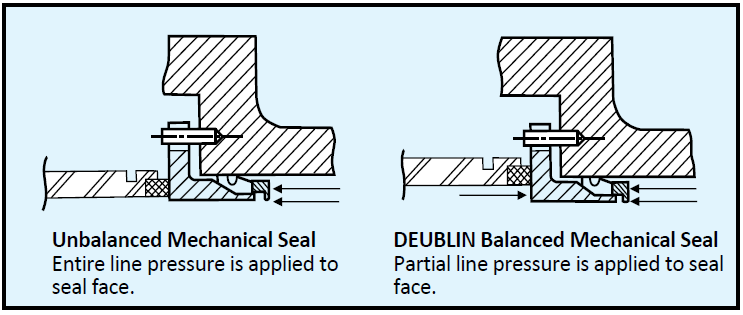
Figure 1: Deublin’s balanced mechanical seals balance the hydraulic forces on the seal, optimizing contact pressure on the seal faces to minimize friction and extend service life.
Deublin designs each of its balanced mechanical seals with a hydraulic balance ratio that is carefully calibrated based on the fluid media and speed of the application to ensure optimal loading with sufficient contact pressure to prevent leakage while minimizing friction.
A spring pushing against the floating seal maintains a positive force. To ensure the two seal faces remain in contact, preventing leakage. Slots in the floating seal accept keys anchored to the housing.
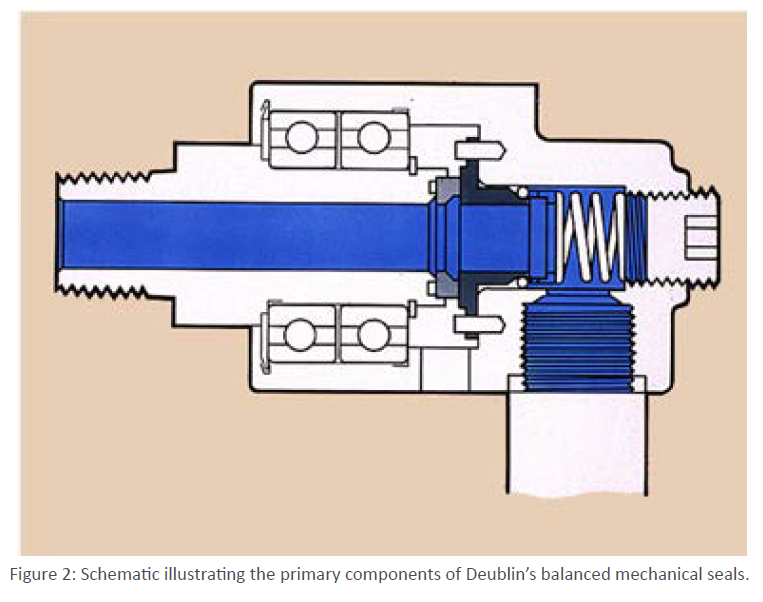
The surfaces of the rotating and stationary seals must be flat and free of surface irregularities to ensure the smooth operation of the union. Deublin’s seals undergo a precision micro-lapping process, finishing their faces to an optical flatness within two light bands or 0.000023 in.
Most Deublin rotating unions with balanced mechanical seals are equipped with deep-groove or angular contact ball bearings. Most of thebearings require relubrication at regular intervals to ensure smooth operation. Although the bearings withstand axial and radial loads on the union, care should be taken when installing the union to minimize such forces. For example, the fluid supply hose connected to the union’s inlet should be flexible rather than rigid and installed with some slack in the line to minimize lateral loads and force moments on the union.
Deublin rotating unions with balanced mechanical seals excel in high-speed applications such as throughspindle coolant (TSC) transfer in machine tools, in which coolant is delivered directly through the spindle and tool to the cutting edge to cool and lubricate the tool, which spins at speeds up to 60,000 rpm.
Pressure Type Seal
Rotating unions with balanced mechanical seals and ball bearings are ideal for many applications. In situations with high operating temperatures above 320° F, however, a different rotating union design is recommended. If the temperature of the media exceeds the operating range of ball bearing grease, such as hot oil or steam, the bearing lubricant breaks down, drastically increasing friction and causing the union to fail. In such cases, a balanced mechanical seal with ball bearing design is not appropriate. Instead, a Deublin rotating union with a pressure-type seal and bushing bearing is necessary. These rotating unions feature selflubricating sleeve bearings that do not require external relubrication,instead of ball bearings.
The pressure seal design, however, lacks the force balancing inherent in the balanced mechanical seal. The full force of hydraulic line pressure is exerted on a single side of the seal, concentrated in the small surface area of the seal face. As an example, given an operating fluid pressure of 100 psi, a Deublin balanced mechanical seal could have an effective seal contact pressure of just 65 psi, while a pressure type seal in the same setup would have a contact pressure of 500 psi, nine times higher than the balanced mechanical seal.
As a result, pressure type seals should not be used in applications with high line pressures in order to avoid increased friction wear and lower service life. Fortunately, the high temperature processes for which pressure-type seals are recommended typically do not operate at high pressures, avoiding the issue of premature wear. The pressure-type seal is often the best choice in high-temperature applications in which a balanced mechanical seal cannot be used, such as for high heat transfer fluids and in plastics, paper, corrugated and other industrial steam applications.

Multi-Passage Rotating Unions
Deublin rotating unions are also available with multi-passage designs which convey more than one media simultaneously. These unions contain multiple conduits isolated from each other by soft seals or mechanical seals so that no cross contamination is possible. Such unions are capable of supplying several media to a rotating machine part at
the same time, such as cutting fluid, air and vacuum.

Soft Seal
A third type of rotating union seal technology – soft seals – feature a flexible seal material anchored to the stationary union housing and surrounding the rotating rotor. This material deforms under compression, forming a leak-tight seal devoid of gaps. Common commercial rotating union soft seal designs consist of a standard rubber material and cross-sectional geometry. Deublin’s proprietary plastomeric soft seals, on the other hand, feature unique chemistries and geometries tailored to the specific media and operating specifications of the application. Part plastic and part elastomer, Deublin’s soft seals are able to withstand higher pressures and temperatures, while providing superior performance by reducing friction and extending service life.
Soft seals are often the lowest-cost solution amongst rotating union seal technologies. There are, however, two limitations to keep in mind regarding soft seals. The first is their limited speed capability: soft seals are not recommended for applications with rotational speeds in excess of 250 to 300 rpm. If operated at higher speeds, the metal rotor rubbing against the soft seal will rapidly wear the material away, requiring frequent replacement of the seal material.
Secondly, care must be taken to keep the fluid media free of suspended particles. If the media becomes dirty, contaminants can embed in the seal and abrade the rotor, causing grooves to form that result in leaks. In this case, the smooth metal surface of the rotor can be worn beyond repair, necessitating replacement of the entire union.
Thus, some method of guaranteeing the media’s purity – such as a filtration system – is required, lest the rotating union’s service life suffers.

Hydrostatic Seal
Rotating union hydrostatic seals consist of a bushing anchored to the union housing and separated from the rotor by a small finite gap. The gap acts as a bypass for the main flow of fluid through the rotating union, allowing a small amount of the fluid to fill the gap as a thin lubricating film. The pressure of the bypass flow drops dramatically from its maximum in the fluid supply line as it reaches the end of the gap (e.g., from 1,000 psi to 1 psi), where it is contained by a lip seal and directed toward a drain to be reused. The size of the gap clearance is critical to maintaining the right bypass flow and lubrication between the rotor and bushing. In Deublin hydrostatic seals, this clearance is tightly controlled by finishing the two surfaces in a matched grinding process.
Deublin’s bushings are permanently installed by a heat shrink process in which the housing is heated and the bushing cooled before dropping it into the housing. The bushing expands as it warms back up, while the housing contracts as it cools. The result is a permanent attachment. Deublin’s bushings are made from a proprietary bronze graphite material that is as strong as steel but has bearing-like properties to handle the friction of the seal.

Deublin hydrostatic seals have long service intervals, operating reliably at high pressure for years before maintenance is required. They are ideal for tough-to-service jobs like the hydraulic blade-pitch adjustment systems of wind turbines, as well as those applications with high uptime requirements such as the hydraulically operated mandrels of coil winding machines at steel mills.
Conclusion
At the core of every rotating union is the seal between the rotor and the stationary housing. The seal is the critical element that determines whether the union will perform its primary fluid transfer function successfully without leaking. The type of seal technology utilized in each union is a design choice driven by the requirements of the application, including temperature, pressure, rotational speed and fluid media.
Deublin rotating unions are highly engineered, precision machined mechanical components designed for operational reliability and long service life in tough industrial applications. With a product line of over 3,000 standard models and the ability to custom manufacture unions to meet specific demands, Deublin will supply the rotating union matched to your exact needs.
Contact DirectPneumatics.com application engineers today to find the rotating union suited to your specific requirements (800-688-2852).

